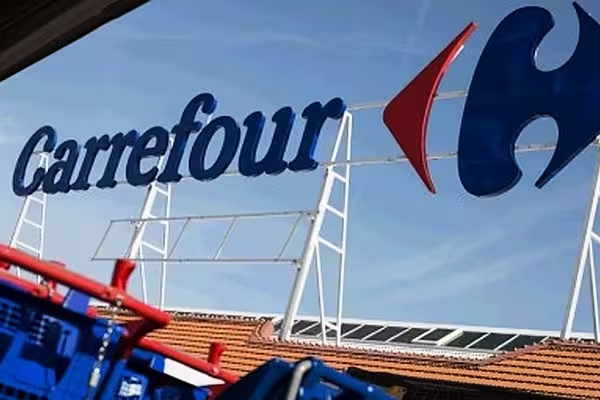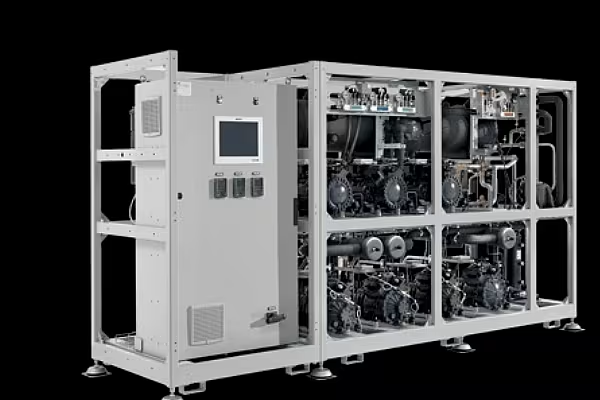ESM talks to Rudolf Hansl of KNAPP about the long-term growth strategy for the company and the biggest challenges facing the retail logistics sector over the next year.
Rudolf Hansl has been part of the management team at KNAPP Systemintegration GmbH, in Leoben, Austria, since 2016.
As vice-president for food retail solutions, Hansl is also responsible for providing optimal support to food retailers.
KNAPP Systemintegration has been part of the globally active KNAPP group since 1995 and implements logistics projects around the world.
Through years of industry experience, Hansl has gained insights into the challenges in food retail, and how automation and e-commerce are changing the whole industry.
The past year has seen many retail businesses face high costs and inflation concerns. What effect has this had on KNAPP’s offering? Are any particular solutions for retailers becoming very popular?
We saw that many of our customers had a very challenging year in 2023, but did see some relief in 2024, as costs for energy and certain raw materials calmed down.
We could observe a significant increase in labour costs in many markets as a consequence of the heavy inflation period, and therefore, the economic sense and urgency for automation is unchanged.
We see a healthy demand for highly or fully automated solutions for bricks-and-mortar supply, whereas the e-commerce boost of the last four years slowed down slightly.
The growth in omnichannel and multichannel retailing presents logistical challenges for many retailers. What sort of questions does KNAPP get asked, and how does it answer these?
We are involved in a couple of investigations on how to best combine the different channels, but most of our existing and potential customers try to optimise the network for the two main channels of bricks-and-mortar and e-commerce.
It is fair to say that the logistics supply chain requirements of those two differ so significantly that specialised automation concepts are paying off. We discuss synergies and how to combine both worlds.
KNAPP works with large multinational businesses, as well as smaller operations looking to embrace omnichannel retailing, for example. In what ways does the company tailor its offering accordingly?
The main difference is basically that, with large businesses, we work to roll out concepts and how to manage and improve the multi-site installation and operation processes, in addition to the optimisation of the solution for the individual site.
Cost per case, capex, opex, service levels, redundancy, etc. have the same relevance, nevertheless, whether it is a small, mid-size or large business.
As well as working on new projects with clients, KNAPP is increasingly being employed to retrofit existing facilities – to improve efficiency, as well as sustainability. How does the company’s approach differ in this case?
Retrofitting has been a clear focus of KNAPP for decades. The way to approach installation, integration, connection and ramping-up is, of course, much more critical than a greenfield project – it is similar to open-heart surgery.
The customers need to deliver daily, so we usually have very restricted time windows to access the site, test interfaces, and ramp-up areas. All activities are split into small packages and duration, as retrofitting projects take much longer.
Logically, the better future extensions and retrofits are prepared in the engineering and delivery of the original project, the smoother those retrofits will work for both parties. This is an important focus of our engineers and project teams.
As well as providing state-of-the-art equipment, what sort of support does KNAPP offer retailers to ensure that their personnel are trained appropriately?
KNAPP offers a wide variety of specialised training sessions. Up front and during ramp-up phases, we offer operational training for the future users of our systems.
In parallel, we offer different levels of service and maintenance for our technologies, ranging from simple mechanic adjustments via mechatronic experts’ training to insights into the software landscape.
After the initial boost to the systems operated, managed and maintained properly, we continuously offer retraining, fresh-ups, or complete packages for new colleagues on and off site.
We run a KNAPP academy, with optimally tailored courses and KNAPP trainers and experts helping from around the globe.
What sort of investment is KNAPP making in future-facing technologies, and how does this align with its long-term growth strategy? Also, how does KNAPP leverage artificial intelligence in its automation solutions?
KNAPP continues to invest in high-automation products in the different fields of activity. We presented the fully automatic RUNPICK concept for grocery retail, and this solution will be continuously improved with significant advantages to the existing concepts.
We have used AI for a long time and have a couple of very attractive applications in our portfolio. One of those is the Pick-it-Easy Robot, powered by Covariant AI, training and improving itself, based on several AI language models.
What measures has KNAPP taken to ensure that its solutions are both energy efficient and environmentally sustainable?
The energy efficiency of our products and solutions has been a main topic for decades, and we continuously work on those areas. The significant advantage of shuttle solutions versus mini-load technology is one obvious focus.
Then, going into details, each lift can be equipped with energy recovery systems, and each component is designed to be as environmentally and energy consumption friendly as possible. Managing the material flow and stopping unused areas in low times are a given.
What do you see as the biggest challenge facing the retail logistics sector over the next year, and how is KNAPP preparing for this?
There are a couple of challenges – it’s hard to say what is the biggest. The midterm development of e-commerce versus bricks-and-mortar will certainly remain a demanding topic.
This will require the right strategy and upfront investments in automation networks for a reasonable business result in five to ten years. Finding labour and labour costs remain a challenge as well. Competition for our customers remains tough.
Our focus is on the continuous improvement of our solutions, products and services, adding modules and functionalities along the value chain of our customers.
This article was written in partnership with KNAPP.
















